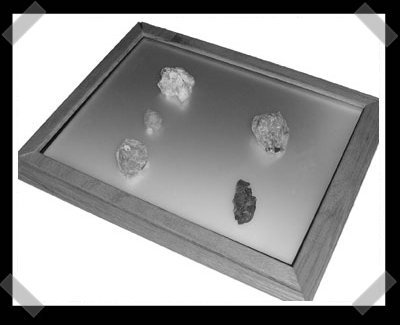
[Jared]’s back in action over at Inventgeek. Now he’s got an odd use for an old LCD: creating an ultraviolet light polarizing table. He gutted the LCD and swapped out the CCFL lams for some UV versions. The result isn’t much more than an interesting conversation piece, but it’s nice to see a use for screens that would otherwise end up in the recycle bin.
14 thoughts on “UV Light Table”
Leave a Reply
Please be kind and respectful to help make the comments section excellent. (Comment Policy)















Simple, but still pretty neat. I quite enjoy UV lights, and the colours that they bring out.
This is one of those projects thatâs so simple its brilliant! Great reuse of parts! Heres 2 ideas though I had as soon as I had seen it. Could you use just a white light in it to do an infinite background for photography? And then what about getting something like 9 of these and different color bulbs to make a disco dance floor like in there dance decks?
Oh and one more that I think has major merit. He is obviously using a filtered UVA bulb. But what if you got a UVC bulb for this? You could use it to sanitize bottles for instance for babies by placing them face down on it while reducing risk of exposure!
could you also use this to tranfer PCB designs onto photo etch PCB material?
i imagine the light distribution is nice and uniform.
@tom
Haha i was thinking the same thing….or you could make a nice coffee table or bar….this is going in my favs, this might be a future project.
Very handy if you deal with cash to check for water marks. Cheaper and faster then a “counter fit” detector.
Too bad UV also tend to destroy your DNA…
That turns in increased melanoma risk and even greater risk if you directly look to the panel.
Dr. Hadamard,
The viewing angle of the monitor (which the author emphasizes) is intended to direct light only towards what’s above the panel. Looking at the panel won’t direct UV light into your eyes. Under ideal circumstances, you won’t be able to see any UV at all, and will just see the fluorescing objects on top of it. And if you do have a wider viewing angle panel – just check Wikipedia to clear up misinformation.
While “black lights” do produce light in the UV range, their spectrum is confined to the longwave UVA region. UVA is considered the safest of the three spectrums of UV light. Unlike UVB and UVC which are responsible for the DNA damage that leads to skin cancer, black light is limited to lower energy, longer waves and does not cause sunburn. UVA is capable of causing damage to collagen fibers, so it does have the potential to accelerate skin aging, cause wrinkles and potentially destroy vitamin A in your skin.
Source: http://en.wikipedia.org/wiki/Ultraviolet
Provided you don’t stand over it for hours on end, all is well.
@ }{itch
“could you also use this to tranfer PCB designs onto photo etch PCB material?”
Fraid not. I tried this and it failed. Pictures, videos and explanation of why it didn’t work in this thread
http://www.openservo.com/Forums/viewtopic.php?t=688
ginge
Hmm. Could you put potted plants on top of this surface to in effect provide artificial sunlight? If so I wonder what effect it would have on the plant, since most plants are designed to receive sunlight… above it! haha
@ginge
i was thinking more along the lines of using the old acetate and laser printer method and putting that ontop of the display and the board ontop of that and just using the UV light coming from the display to develop it seeing how nice and uniform the light coming from the display looks (i dont know if that would’ve made a difference or not, its a while since i’ve done it)
your idea was considerably more cunning and interesting! its a damned shame it didn’t work out, that would’ve been fantastic for rapid prototyping.
}{itch
It’s a very cool project, but I don’t think it polarizes the light. The LCD panel provides the polarizing, but that’s removed in the construction process. If you want to polarize the light, add some of this:
http://www.3dlens.com/polarizingfilm.htm
I recently gutted an lcd monitor to make a light source for photography and I’m thinking of adding a polarizing filter to do some fun stuff like this:
http://flickr.com/photos/djason/sets/72157601114214399/
Hey Txoof,
Those are some cool pictures!
Alan P: I wish I could take credit for those sweet polarized light pics, but they were shot by my friend Jason for a gallery show. He’s a much more creative and talented photographer than me.